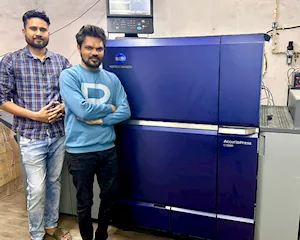Survey that looks at ROI for ads in magazines
Tarun Rai, chief executive officer, Worldwide Media and president of Association of Indian Magazines (AIM) and Mitrajit Bhattacharya, president abd publisher, Chitralekha Group and vice president of AIM provided an anlysis of the engagement survey report and the new strategy for promoting print magazines.
26 Apr 2012 | By PrintWeek India
Q: One of the key objectives of AIM’s engagement survey is to up the 3 to 2.5% ad spend in magazines. Is it achievable? What is the target for the next 12 months?
Tarun Rai (TR): Yes, the share that magazines get of the total ad spends is small in India. In developed markets the share of magazines can be as high as 10-13% However, we have not set any objective in share percentage terms for this survey. What we do want is more attention from advertisers and media buyers that we believe magazines as a medium deserves. While media in India has exploded in the last decade and a half with all kinds of media now available, measurement of media has largely remained number oriented. It is still only about the number of people reached and not about the quality of the audience reached or the quality of the interaction that the audience has with the medium. We want to change the conversation to the quality aspects of various media interactions. We want advertisers and media buyers to factor in the strength of engagement of various media vehicles into their buying decisions. It is towards this end that we commissioned two independent and reputed research agencies, Quantum and IMRB, to conduct a massive research across India to find out how consumers interact and engage with various media and how magazines compare with the other media vehicles.
Mitrajit Bhattacharya (MB): Magazines deserve more of the advertising pie for sure. That’s because the magazines are not represented well by the readership surveys, which are designed mainly to cater to the newspapers. In absence of any other data, planners have no option but to blindly follow the readership softwares to come up with media plans unless planning for a specialised genre or the B2B space.This survey attempts to change the conversation from just numbers to advertising efficacy by addressing the most important issue of “engagement”.
Q: Could you help us through the research processs?
TR: The findings of the research are a huge corroboration of what we believed - that magazines score the highest when it comes to engagement. The research also surprised us (pleasantly, of course) on how strong magazines were on very important parameters like trust and purchase intent. We wanted to take these findings to a number of stake holders - advertisers, media planners and buyers as well as our own ad sales teams. We got DDBMudra to develop an entire take-to-market communication package which is being rolled out now. We plan a series of road shows to talk about this research. We have also planned a number of workshops for magazine publishers and their sales staff to acquaint them on the research findings and take them through the ‘toolkit’and how to use it.
MB: The findings were first presented at the World Magazine Congress 2011 and we are extremely happy with the response ever since. Magazine publishers across the world have been asking us to share the findings of the survey with them, which is very encouraging. AIM has also fielded the survey as one of the entries at the FIPP’s global research awards, the results of which are awaited. When we wanted to change the conversation, we realised that apart from depth of information we also needed to have numbers backing our findings. Hence Quantum and IMRB were commissioned to conduct a two stage research - a qualitative survey followed by a large scale quantitative study (3,600 respondents, 10 cities). The quali-phase helped design the scope and deliveries of the quanti-phase. While we had some ideas of definition of engagement in terms of statements from international studies, the quali-phase helped phrase the same from an Indian context. While the quali-study opened up the hypotheses, the quanti-survey validated those on a huge number of respondents across length and breadth of India.
Q: The print campaign is very youthful. Is this a conscious strategy to attract new-age advertising?
TR: Magazines in India are passing through a very exciting phase. International magazines are being launched, English magazines are launching regional language editions, digital editions are taking off...maybe the excitement of the industry rubbed off on to the campaign. Yes, there was a conscious attempt to ‘package’ the research findings in an unusual way. We wanted the communication of the Engagement Survey to be engaging too.
MB: There is a two-pronged strategy which AIM is working on - one, the internal audience (the ad sales teams of magazines) and two, the agencies/ advertisers. The basic idea behind this is to empower and fortify our sales staff with all information and knowledge to address any query/ clarifications from the clients/ agencies if there may be. We are thinking of doing road shows across two-three metros to start with.Apart from the campaign, we will have leave behind booklets/ CDs for the agencies. The data will also be available on the AIM website.














 See All
See All